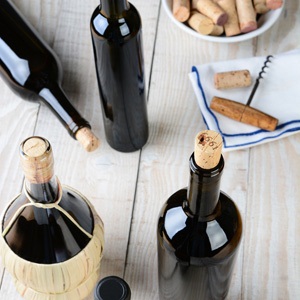This must be the Holy Grail for wine-lovers – good-value wines. I don’t always mean cheap wines – that is another category altogether – but wines which are available at fair prices and ones which generally over-deliver on those prices as well.
One way which has long been the secret of the wine industry, is to look for ‘second label’ wines – wines made by big name, prestige producers using all the best winemaking techniques, equipment and know-how, but often using fruit from young vines or from parcels not quite up to the really top stuff.
Great examples of super-second labels would be the Kloof Street range from Mullineux Wines, The First Lady wines from Warwick or the Cellar Selection range from Kleine Zalze – all fabulous wines at everyday-drinking prices.
But there is another way to get good value in the wine world and that is to try and do the opposite of the above. Look for wineries which are best known for inexpensive wines, generally produced on a larger scale, and see if they have a top tier of wines.
This tier is often viewed as ‘winemaker indulgences’ where the winemaker gets a chance to play and experiment, often utilising batches of grapes which she thinks are too good to go into large, somewhat anonymous blends.
Because the winery itself is synonymous with good value, these top wines are often priced accordingly, making them extremely affordable and far more exciting than many other offerings.
Here are a few labels I recommend you investigate:
Happy drinking!
Dimension and Quest from Du Toitskloof Wines
Du Toitskloof is the everyday drinking wine of thousands of us and for R30-R35 you get a decent, well-made everyday wine. Their Dimension Range has a red blend for R75, but the star of this tier has to be their Nebbiolo 2010 which comes in at a crazy R45 – yes really. Juicy black fruit, soft tannins and hints of spice and chocolate.
And now Du Toitskloof has also just launched a new premium label called Quest. Featuring two red blends, one a Bordeaux-style and the other a Rhone-style, these are serious wines which need a bit of time. I tried the Bordeaux red and initially wasn’t impressed, but after leaving it for a day and giving it lots of air, it was wonderfully rich, cleanly-fruited, elegant yet intense.
At R160 a bottle, it may not be every day, but it’s certainly cheaper than many others of equal stature.
It’s hard to think of a much better everyday glugger than the Classic Collection Chenin Blanc from KWV. I’m not a great fan of some of their wines (Pearly Bay and Café Culture spring to mind here) but the Classic stuff is just that – classic stuff at around R35-R40 a bottle. But if you want to splash out and still get a lot for your money, you need to try the Mentor’s range.
This is a range of wines that have been given absolutely top-notch treatment by the KWV team and it shows in every glass. My favourites are the Mentors Chardonnay 2013 and the Mentors Sauvignon Blanc/Semillon 2013 (both R220) and the Orchestra and Canvas red blends, (both 2012, both around R340).
Again, not everyday drinking, but considering most top reds start at around R400+, they’re definitely worth a look.
Credo from Stellenbosch Vineyards
Stellenbosch Vineyards have been sponsoring my ‘Grape vs Grain’ debates at various foodie shows around the country which I’ve been enjoying tremendously because it means I get to drink Credo a lot.
Their everyday ranges – Arniston Bay and Welmoed – are easy-drinkers in every sense of the word, but winemaker Bernard Claassen has really been let out to play with the Credo range.
Lots of oak sensibly used, low yielding vines and plenty of flavour makes the Credo Chenin Blanc, Chardonnay and the unusual red blend (Shiraz, Merlot, Viognier) tasty and affordable bargains at R100 a bottle.

